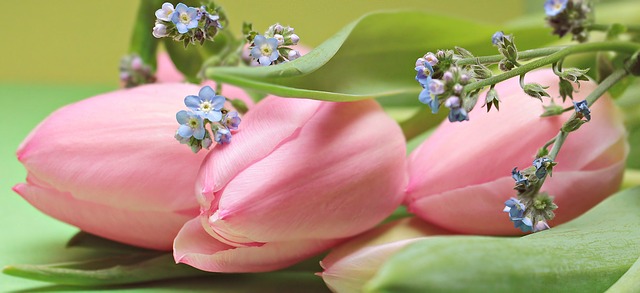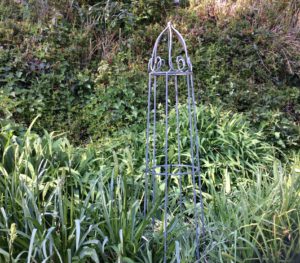
What Jobs To Do In The Garden In April
Spring is officially here, we’ve had the spring Equinox and British Summertime has begun, which means I am looking around my garden now for priority jobs and thinking ahead to what jobs to do in the garden in April. Now that the days are longer and starting to warm up there is plenty to keep me busy.
Nature is of course well ahead of any human intervention. She has been showing us Springtime for many a week.

Trees are budding vivid green, daffodils are dancing cheerfully, birds are singing in the hedgerows and looking for their mate, wildflowers are well on their way, tadpoles are all of a wriggle and cherry blossom is blushing the most becoming pinks.
Spring is a time of birth… of new growth, looking around at all the buds, leaves and perennials peeking up through the earth will give you some clues of what jobs to do in the garden in April. First and foremost are weeding, feeding and nurturing.
It’s a tricky time of year for gardeners. First of all we have frosts still to contend with, also the last few days have been unseasonably hot, temperatures range from -3 overnight to somewhere in the region of 20+ degrees during the afternoons. This is not completely unheard of for this time of year, but it isn’t the norm.
So we need to protect tender plants, new shoots on perennials and fruit tree buds from the cold but also we’re having to water container plants and bulbs and raise sturdy, healthy seedlings too.
We have our work cut out; but let’s take a look at some of the most important jobs to do in the garden in April.
What Jobs To Do In The Garden In April – Beds and Borders
Every time I have a wander around my garden I deadhead any finished spring bulbs such as daffodils, hyacinths and tulips.
Leave the greenery to die back naturally as this will help feed the bulbs, which keeps them healthy and productive. If you have containers of bulbs then you can remove them from their display area and keep them somewhere out of the way.
This gives you space on your patio or in borders that can be filled with up and coming plants or different container displays. If you’re looking for inspiration for spring planting schemes take a look at
Plants For Spring Colour

Summer Bulbs
Plant tubers and summer bulbs in the same way that you did the spring bulbs to give you a show of colour and variety throughout the summer and autumn.
If you’re not raising summer annuals from seed then buy plants for summer bedding planting schemes, containers, window boxes and hanging baskets.
Buying small plug plants now, that you can grow on, works out cheaper and better value for money than buying larger plants later on.
Divide Perennials
If any perennials have grown too large or you want to propagate them, now is the time to split them.
Water the plant well prior to digging it up, cut through or pull apart the crown and plant the new pieces. Dividing plants revitalises them and provides new one to fill in spaces in the border.
perennial-plants-first-year-flowering
Roses and other climbers
Tie in new growth on climbing and rambling roses.
Feed and mulch all roses.
Tie in new growth on Clematis and other climbing plants.
Put plant supports in the borders now, it’s far easier now than when plants have grown up a lot more later in the season.

how-do-you-grow-roses-secrets-of-success
Feed and Mulch Shrubs and Trees
Feed and mulch shrubs.
Feed citrus trees.
In UK climates we can grow citrus in pots outdoors throughout the summer but we have to bring them indoors in winter. They need a high nitrogen feed from March through to September, keep them well watered and if you have put them in their summer home already then please do protect them from frost, it’s a good idea to have fleece handy just in case the temperatures drop.

What Do You Prune In April?
Spring is the time to prune many of the shrubs and plants in your garden. Pruning helps maintain good shape of shrubs and removes dead, damaged or diseased stem and branches.
Following pruning, mulch with a good layer of homemade compost if you have some or well-rotted manure to give your plants a helping hand.
Shrubs such as Salix and Cornus that are valued for their winter stem colour an still be cut back at the beginning of April.
Prune back hard all of last year’s growth to about 1-2cm.
Other shrubs that are cut back hard in spring, to keep their larger or Cotinus) and elders (Sambucus), can be cut back this month. You can leave a couple of branches un-pruned if you are reluctant to lose all the height gained last year.
Cotinus and Sambucas are loved for their colourful new foliage and to keep the colour true they too are pruned hard in spring. If you wish to still maintain some height on them for interest or privacy then leave some stems/branches un-pruned.
Spring flowering shrubs, for example, Forsythia, Chaenomeles, Wigelia and Spiraea Bridal Wreath should not be pruned until after they finish flowering otherwise this year’s colourful, beautiful blooms will be lost.
If any of your evergreens have frost and cold weather damage then you can prune these too in April. Hardy variegated evergreens sometimes have new shoots that have reverted to green, prune any off to prevent a full reversion.
Lavender, curry plants, cistus and rosemary all benefit from a light spring trim to prevent then from becoming leggy and woody and to give them a healthy boost to encourage new growth.
Summer flowering shrubs such as budliea and fuchsia can also take a hard prune to encourage strong new foliage.
Ornamental grasses can be cleared of last years growth.
A long pole saw/Pruner is ideal for teaching some of those higher branches easily and safely. A cut above Best Cordless pole Saw.
A cut above Best Cordless pole Saw.
Jobs in the Greenhouse
It’s not too late to clean, tidy and do any necessary repairs if you haven’t done so already. Install a water butt by the greenhouse to collect rain water. Rain water is far better for your garden than tap water. 
Plant up hanging baskets and pots with small plug plants and keep in the greenhouse for them to become established and strong before placing them outdoors. Beautiful Hanging Baskets are easy to grow and maintain and with a little know how and time they can add stunning, colourful displays to you outdoor space, see my article for handy tips on how to plant up your hanging baskets and the best plants for hanging baskets
Prick out indoor grown seedlings into individual small pots.
Spring Lawn Care
Continue mowing lawns on a regular basis, remember to do the edges too for a neat and tidy finish. Re-seed any bare patches. Aireate any compacted areas. Cordless Mowers are more environmentally friendly than petrol ones and are more versatile in terms of where we can use them as there are no trailing cables or any need to use extension leads.
For information on spring lawn care read my article
Best Spring Lawn Care Tips 6 Easy Steps To The Perfect Spring Lawn
Bosch Rotak 430 LI Ergoflex Cordless Lawnmower Review
Alternatively, allow an area of grassland to grow wild with added wildflowers to encourage wildlife and to benefit the environment.
A wildflower meadow is a lot less maintenance than a perfectly manicured lawn and in my humble opinion, more attractive.
General Maintenance
Weed Paths and Patios
Weeds unfortunately grow whatever the time of year or whichever weather conditions we get so do continue to weed borders in order that your plants don’t have to fight for nutrients and water.
Keep pathways, driveways and patios clear of weeds with the aid of an Electric Weed Burner
Move Evergreen Shrubs
Spring is the ideal time for moving any shrubs or trees that you have ascertained are in the wrong place, be it for ease of maintenance, potential damage to property because of their eventual size or you simply think they will be better off elsewhere.
Prepare the new planting area first.
When digging out the shrub/tree do so carefully to minimise damage and take as much of the root ball as you can possibly manage.
Water well once you have planted it in its new home.
Vegetables and Fruit to Grow in April
Protect blossom on fruit trees against frost, any frost damage can result in the loss of fruit.
Small trees can be covered with fleece, using canes to keep it of the buds, remove during the day to allow pollination.
Plants in pots are easily protected by moving them to a sheltered spot through winter.
Cover cordoned and espalier trees on fences or walls with fleece or shade netting, as with trees, remove it during the day to allow pollinators to do their job.
Cover strawberries with cloches or fleece and remove during the day.

Feed and mulch.
Feed and top dress container grown fruit.
Seeds to Sow In April
Sow hardy annuals, herbs and wildflower mixes outdoors.
Sunflowers can be sown indoors in trays or modules or sown directly into the garden borders.
Flowers that you can sow now indoors in trays or modules are
- cosmos
- scabious
- cornflower
- poppymarigold
- petunia
- nicotiana
Harden off indoor grown annuals.
Vegetable seeds to sow indoors
- tomatoes
- pumpkins/squash
- courgettes
- cucumber
- aubergine
Veg seeds to plant directly outdoors are
- radish, salads, onions, spinach, kale
- beetroot, broad beans, broccoli
- brussels sprouts
- carrots and potatoes after the risk of frost
Runner beans and French beans can be sown at the end of the month and into May
how-to-grow-plant-seed-5-easy-steps
Yes –April is a busy month, it’s a time of growth, of great expectations and anticipation. There will be some disappointments too I’ll warrant, but Oh Boy it’s good to be out in the garden early morning when the sun is just coming up, the air is chilly and the birds are entertaining us with their dawn chorus. To help attract bees, butterflies and other pollinators into your garden read bees and butterflies plants.
Winter has passed on and we gardeners can breathe in fresh air and delight in being back outdoors watching everything come back to life.
A great spring project is to create some raised beds for veg, herbs or cut flowers. Railways sleepers for example are versatile and an attractive option.
Please share this article with friends and family and on social. If you have any questions please pop them in the comments box below, I love to hear what you are doing in Your gardens. I always reply as soon as possible.
Happy gardening
Thank you.





I have always been dreaming about spring because this is the best season I love most, You have highlighted various points here which serves as an eye opener for me because of the nature of my garden. I have also experienced the negative side of spring bulbs severally but i appreciate you for sharing long lasting solutions to these challenges.
Hello,
Thank you for your comments…I’m interested to know what problem you have had with spring bulbs, I’m happy to help if I can
Louise
April is here and winter is gone ushering in the spring. Flowers are budding and birds can be heard chirping in the garden. For me, it’s a season of planting and tendering of the garden. At this time of the year, my garden usually have the best of looks because I tend to pay much attention to it more than ever
Thank you for your comments.
Enjoy your garden, this really is a beautiful time of year.
Louise
It looks like I came upon your website at the right time. So I’m looking around, now that the snow is finally gone (for good I hope lol) and I’m seeing so many things that need to be done. Leaves everywhere from last fall that didn’t make the last cleanup, toys and doggie doo doo from the long winter of not picking it up in the yard, and of course our garden looking like it can’t wait for us to come out and love it again. The weather is warming, and it’s time to get going, and your article here is so helpful, thank you!
Hi Babsie
Thank you for your comments, it certainly is a busy time in gardens, once you have your tidy again , you will be raring to go.
Enjoy
Louise
This is the kind of information I was been searching for. We have a garden now, but as you mentioned, it is good during the day, but the nights are still cold. And I had no idea how to protect our plants, and if it was already a good idea for planting them. Thanks to you I have no more scared about things, and I just know what to do. Thanks a lot for that!
Hello Emmanuel,
Thank you for your comments, I’m happy that you’re feeling more confident with what to do in your garden.
I’m always happy to help if you have any questions.
Happy gardening
Louise
Reading through this article just got me wishing ai had a house with a garden of its own. I definitely would have loved to have a greenhouse and be making all these preparations and making use of all these valuable tips which would in turn yield beautiful plants. I was wondering. Can I grow Tulips indoors?
Hi there,
Thank you for your comments, I hope one day you will have a garden to enjoy…you could always plants up some pots..
Yes you can grow tulips and many other spring bulbs indoors.
Best Wishes
Louise
What an interesting and awesome article on what jobs to do in the garden in April. Spring time is here and it is importations get the garden tidy for planting preparations. I agree with all the jobs you have said to do in the month of April. This is really the right jobs to do in preparation for spring activities in the garden. I found your article very informative and helpful. I have learnt something valuable today. Thanks for sharing this article.
Hi,
Thank you for your comments,
I’m pleased you enjoyed this article.
Thanks
Louise
Yes, its such a beautiful time of the year in April to experience spring which comes along with these changes. For me, it’s a time for new lives to come up especially as it applies to nature. It is really such a time to breathe in fresh air and delight in being back outdoors and watching everything come back to life. The advise and knowledge i have received from this article is priceless as to what to expect and do during this spring as it pertains to gardening. For me, I’m starting up a garden this spring and I’m going to follow your teachings in this article. Thank you from my heart.
Hello and thank you for your kind comments,
I am thrilled to know that are starting a garden, if I can help in any way with, advice and tips etc then please do get in touch
info@plantsbulbsseeds.com
Good article! This is what I have been looking for ideas for my spring and summer outdoor view I have a small piece of land in front of and behind the house. I think I will plant tomatoes this year. Do you think seeds bought from the stores workable? What is your suggestion for the beginner of first time tomato planter? In addition, the tulips came back every year by themselves with lesser buds and blossoms year by year. Is this normal? Do I have to replant with new tulip bud? Thanks for the article.
Hi,
Good luck with your tomatoes, yes the seeds will grow, follow the instructions on the packet, keep them well watered when they are growing but not saturated, somewhere sunny and warm.
Tulips, take the dead flowers off and leave all the greenery to die back, don’t remove it till it is all yellowed, this will help to feed the bulbs ready for next year.
Hi! I can’t wait to start breathing that fresh air and stopping every once in a while to delightfully listen to the birds dawn chorus.
Yes, April is a lot of work for us gardeners. But it’s so rewarding too. Thank you for outlining the most important jobs to do in the garden in April. I can relate to most of them. And I’ll share this post with a couple of friends that will smile after reading. Thank you very much!
Hello Henry, thank you for your comments, Spring is a wonderful time of year. Enjoy your garden and thank you for sharing